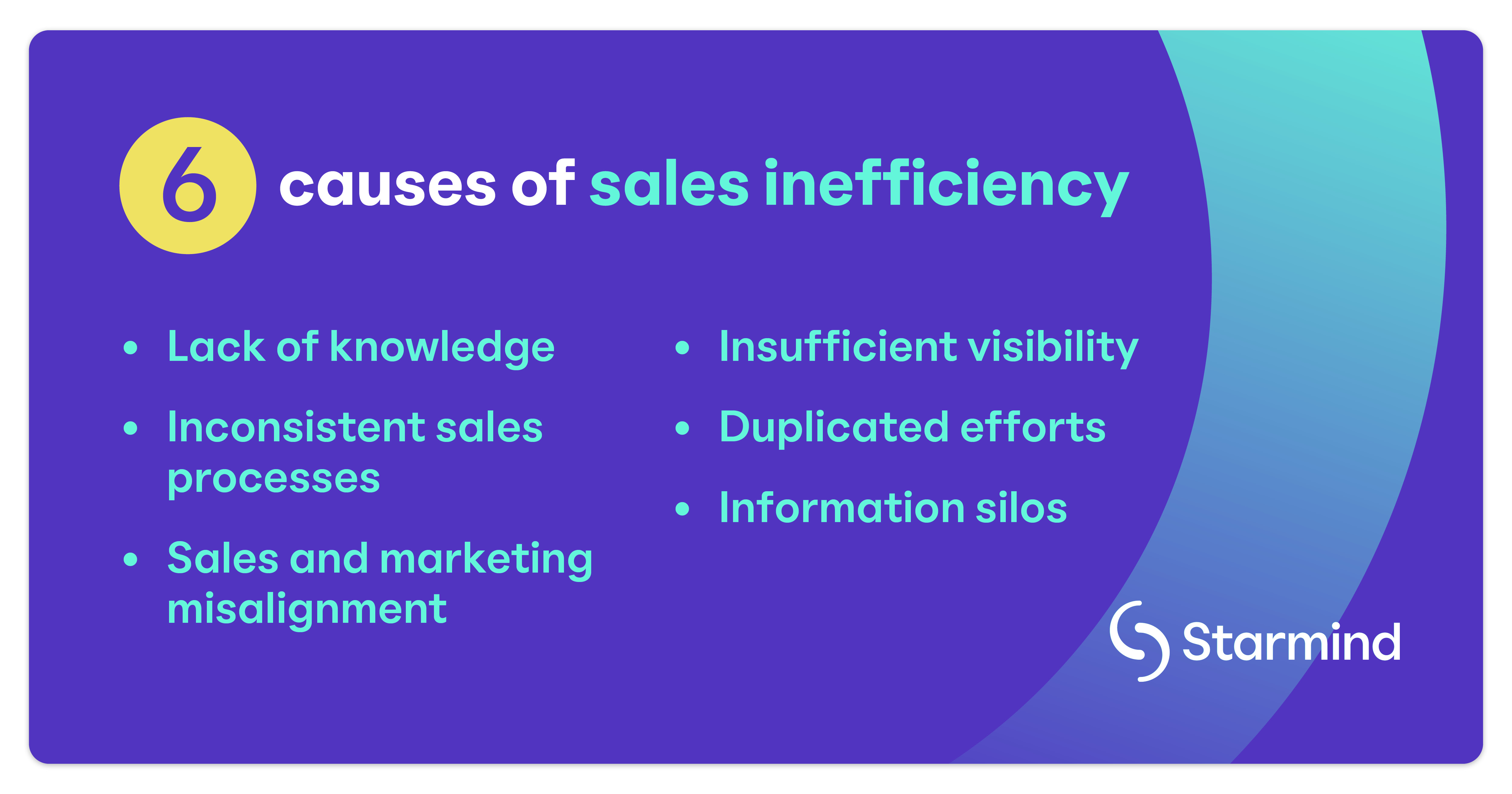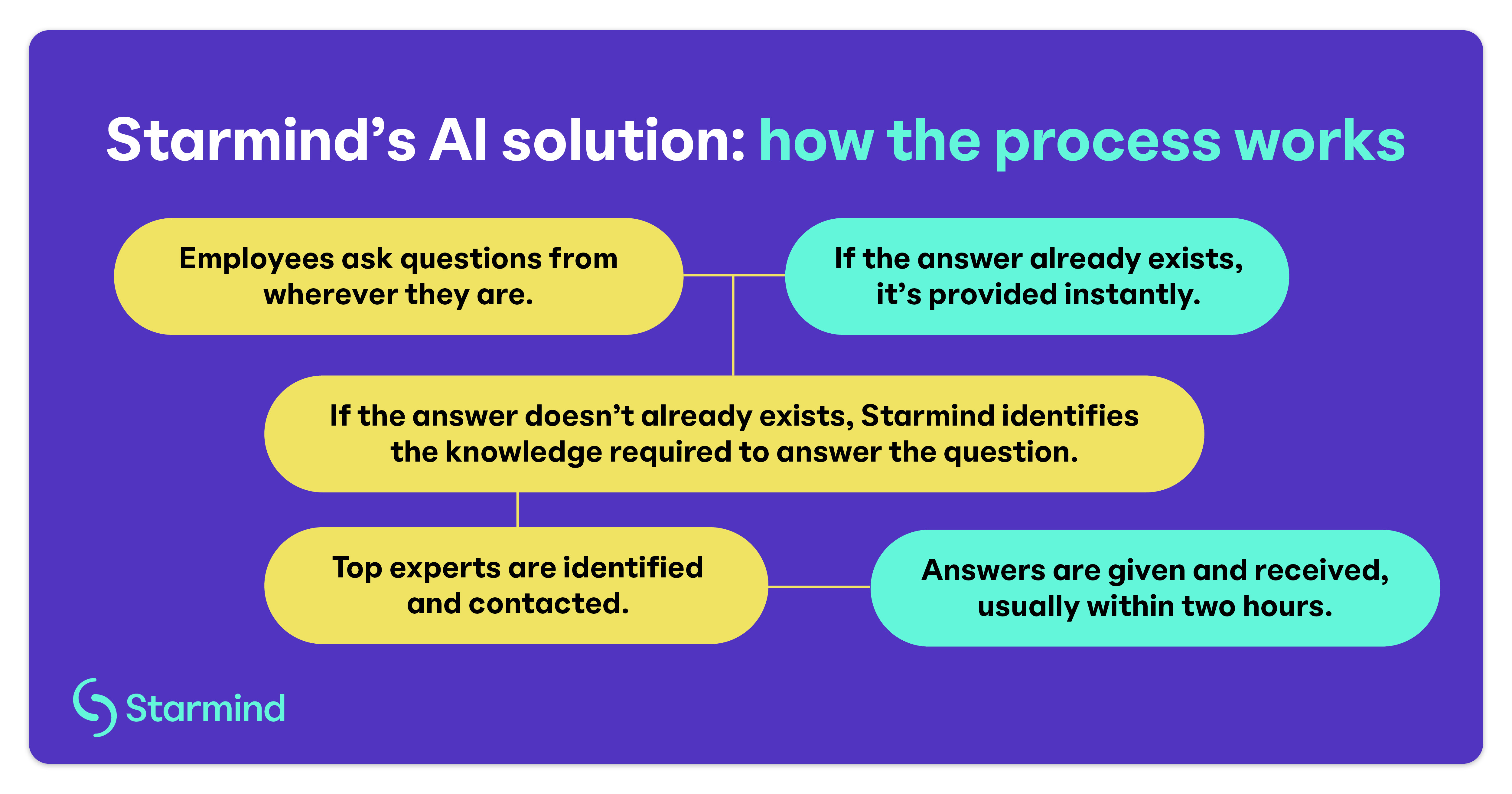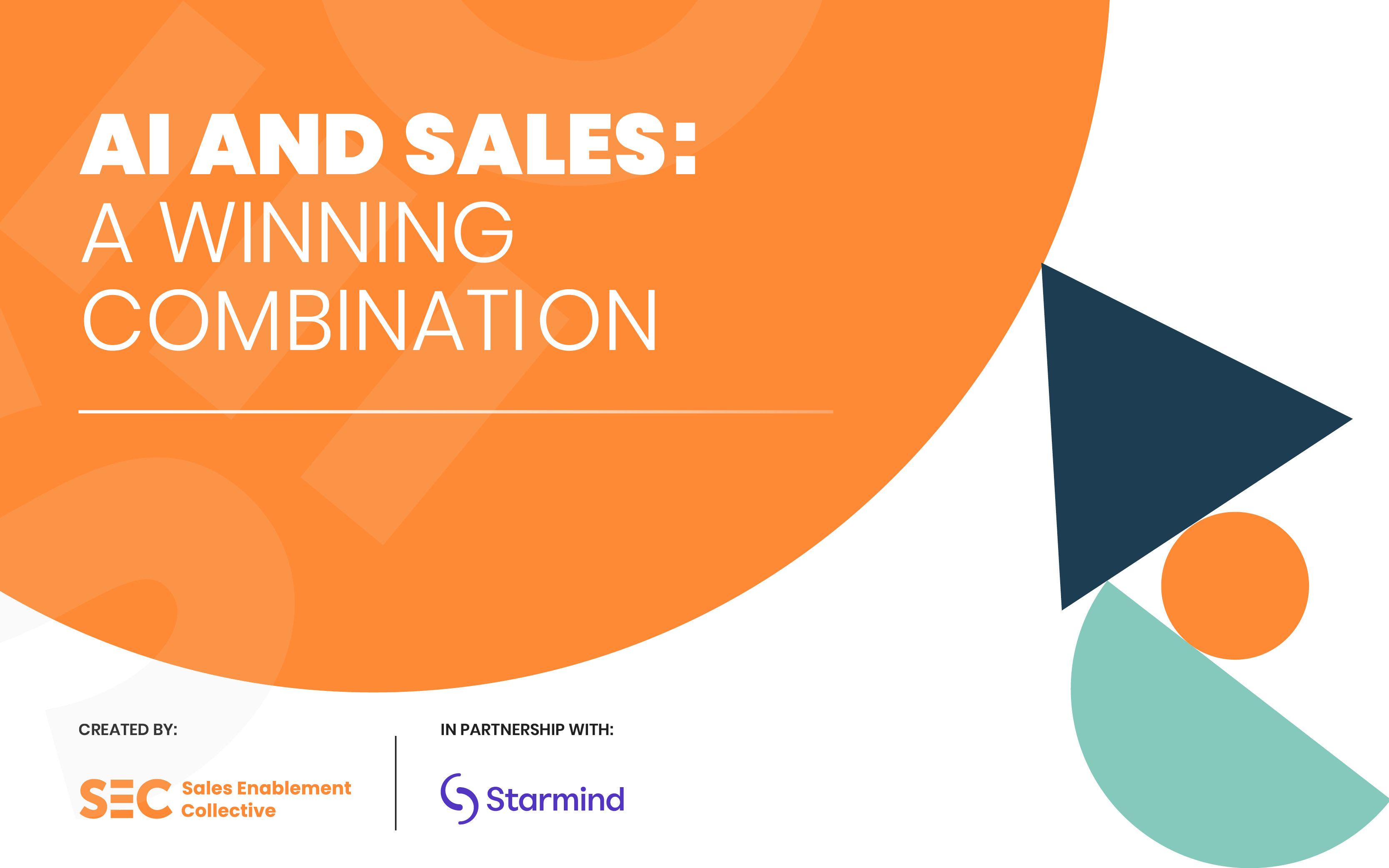How to improve sales efficiency and shorten sales cycles with AI

Contents
There's immense pressure on sales teams to close deals quickly so they can capitalize on opportunities, increase revenue and adapt to evolving customer demands. One emerging way to improve sales efficiency is by using artificial intelligence (AI).
Ebook Sales and AI: A winning combination [In partnership with Sales Enablement Collective]
AI-powered tools can help sales teams achieve greater results with fewer resources by optimizing the process and providing valuable insights. By improving efficiency, AI addresses a key concern of enterprise leaders who believe sales teams close fewer deals because of poor access to information.
Uncover what’s driving slower sales processes and why these challenges exist. Then, learn about how you can leverage AI solutions to improve sales efficiency and shorten sales cycles.
What causes sales inefficiency?
Efficient salespeople spend most of their time actively working on closing deals. Here are some common roadblocks that disrupt performance and slow down sales cycles.
Lack of knowledge
When sales teams lack knowledge about the products or services they are selling, they take longer to find answers and communicate them to prospects and clients. They might struggle to explain features or overcome objections. As a result, customers may become frustrated and disengaged. At best, they require more time to be persuaded of the product or service’s value.
Inconsistent sales processes
Without consistent processes in place, sales teams may have difficulty keeping track of customer interactions, needs or data. This affects their ability to follow up, close deals and offer post-sale support. Inconsistent processes also create confusion and frustration internally because sales activities aren’t organized or efficient.
A good sales process provides structure and organization, facilitates communication from first contact through post-sale support, and ensures key activities and goals are tracked and accessible for follow-up. Without good processes, team members struggle to get support or even know where to find it. The result is delays, confusion and missed opportunities.
Sales and marketing misalignment
Sales and marketing teams are a powerful combination, but they don’t always work well together — often because their priorities aren’t aligned. Marketing campaigns, for example, should support sales initiatives, and sales teams should share key intel with marketing teams.
Without alignment, marketing materials won’t be tailored to customer needs or even the right audiences, while sales teams are less likely to have the right prospects in the right quantities. Poor alignment makes your efforts less efficient and effective, wastes marketing spend and can reduce team morale.
Insufficient visibility
Sales managers need to be able to visualize key performance indicators (KPIs) and the factors affecting them. Likewise, salespeople need to be able to log activities, track performance and find support. The more time employees spend looking for information means less time selling.
Key business data, such as sales pipelines, customer information and product details, are often spread across multiple systems, exacerbating the problem. Without a centralized platform to serve as a single source of truth, data may be inaccessible, outdated or incorrect. This reduces the effectiveness of strategic decisions and hinders salespeople from doing their jobs.
Information Silos
One of the biggest roadblocks to sales efficiency is information silos within the organization. Poor processes or technology can cause silos, or they can be the result of highly competitive environments or a culture of poor communication. Whatever the cause, the result is that valuable knowledge and resources are inaccessible or withheld rather than easily accessed by anyone who needs them.
Silos limit transparency and the flow of critical information, which slows down teams, creates duplicate work, and adds to frustration.

What do these challenges exist?
Sales inefficiency can be a result of poor performance, systemic issues or a combination of the two. Here are some common reasons for sales efficiency challenges.
Overreliance on personal experience
There are many reasons salespeople rely on their intuition and judgment. They might have years of experience, specialized knowledge or confidence. Or time might be of the essence — they want to give an answer during the meeting. Salespeople might also rely on personal experience if they don’t realize the information they need is available.
Employee turnover
In recent years, annual turnover for salespeople has been about 35%, meaning you could have a completely different salesforce every few years. Inefficient sales teams spend much of their time trying to hire and train replacements, as well as account for knowledge that walked out the door with former employees.
Default to asking instead of searching
Sales is social. Great sales teams prioritize relationships, understand each customer’s needs and show them how your products and services are part of the solution. But because sales is social, salespeople tend to ask for answers rather than search for information, even when the facts or data points they need are readily available. Salespeople might also go to the people they know best for answers, even when they aren’t the right internal expert or are overburdened by requests.
Inherent complexity
Few products or services sell themselves, or else you wouldn’t need sales teams. Salespeople are increasingly consultants, trusted partners who help customers navigate complex issues. Many sales solutions are themselves complex and difficult to communicate.
Complexity also manifests in the cultures, processes, business models and systems used by sales teams. Any of these areas can make selling more difficult and inefficient, even before you consider external factors such as constantly changing customer needs, evolving technologies and competitive pressures.
Improving sales efficiency with AI
A well-managed sales process is the sum of many parts, with every stage of the sales cycle presenting opportunities for efficiency gains.
Sales success isn’t solely determined by exact, robotic interactions. Earning customers' trust requires paying attention to the smallest details while understanding their feelings and aspirations. It’s not uncommon for prospects to express concerns like, “We didn’t feel like you could reliably deliver against X ” or “If only you had mentioned Y.” Salespeople need to actively listen to these concerns and address them.
Experience also plays a role in sales efficiency. Seasoned sales professionals and other subject matter experts (SMEs) have vast stores of undocumented, or tacit, knowledge. Only some of their intelligence can be written down
Sharing tacit knowledge, however, isn’t as simple as onboarding a new employee or conducting one-on-one sales coaching. The challenge involves connecting sales reps to the right people at the right time — and quickly. This process must be efficient so salespeople aren’t unnecessarily delayed or SMEs overwhelmed by repetitive or irrelevant questions.
But for all the tools sales teams have to manage their activities, many still struggle to answer three key questions:
- How do we give sales more time? Many sales tools can add time to salespeople’s days instead of freeing them up.
- How do we enable sales to learn more from each other? Many technologies inadvertently contribute to silos or fail to connect sales teams with the expertise they need.
- How do we make sure sales feels engaged with the company and driven to learn, share and close?
Your sales teams need seamless access to knowledge, resources and support that will free them up to spend time with customers. Starmind’s AI-powered solution provides an enterprise-wide Expertise Directory to do just that. Starmind uses natural language processing to understand all your organization’s data, whether it’s in CRM systems, document repositories, or from interactions on the platform itself. The platform then extracts an understanding of who knows what in great detail.
This resulting network of internal knowledge can be used to direct salespeople to the right SMEs at the right time, no matter where they are in the organization or what location they work from. Starmind’s AI assigns questions to multiple relevant SMEs to avoid bottlenecks and improve response time. The result is accurate, timely answers for 95% of the questions asked on the platform.
Repetitive questions can be handled even more quickly. Starmind will recognize if the question or a similar one has been asked. It also retains new knowledge and uses this information to refine its understanding of the topic. Starmind’s AI solution reduces the time sales teams spend searching for answers by 75%, on average, according to IDC research.
Here’s a quick look at how the process works:

The bottom line
Maintaining sales efficiency is a constant battle, but AI-powered tools have become an important part of the answer.
Starmind unlocks the intuitive knowledge of your sales organization, offering unprecedented quality of customer interactions at every stage of the sales cycle. By spending less time on administrative tasks, sales teams can spend more time prospecting and selling. And when they do have questions, they can unlock the considerable knowledge of your SMEs.
Starmind helps leading sales organizations around the world improve their sales processes and realize meaningful efficiency gains with AI. For example, Starmind helped international medical and safety technology leader Dräger give its sales team faster access to product expertise.
Learn how Dräger increased salespeople’s working time by 12 percentage points.
Sign up to receive latest stats, insights and events
Ebook AI and Sales: A winning combination [Download now]
Odds are, you’re thinking about how to implement an AI tool into your sales organization right now. Download now and discover:
- A guide to what AI is and what it’s doing for sales orgs
- Innovative uses of AI in sales
- How to get the most out of your AI tool
Download your Ebook today!
My rich text default content

My rich text default content

Left side rich text
Right side rich text
Pillar section rich text


